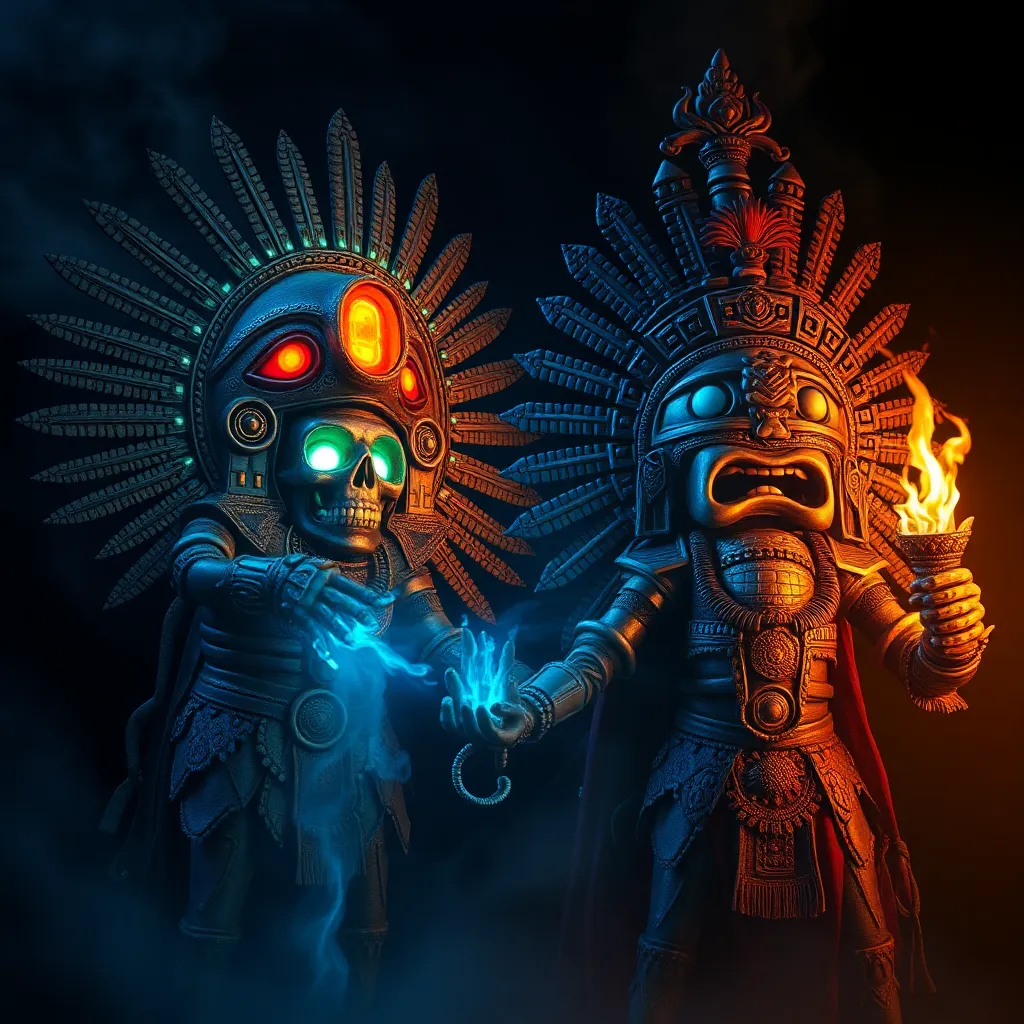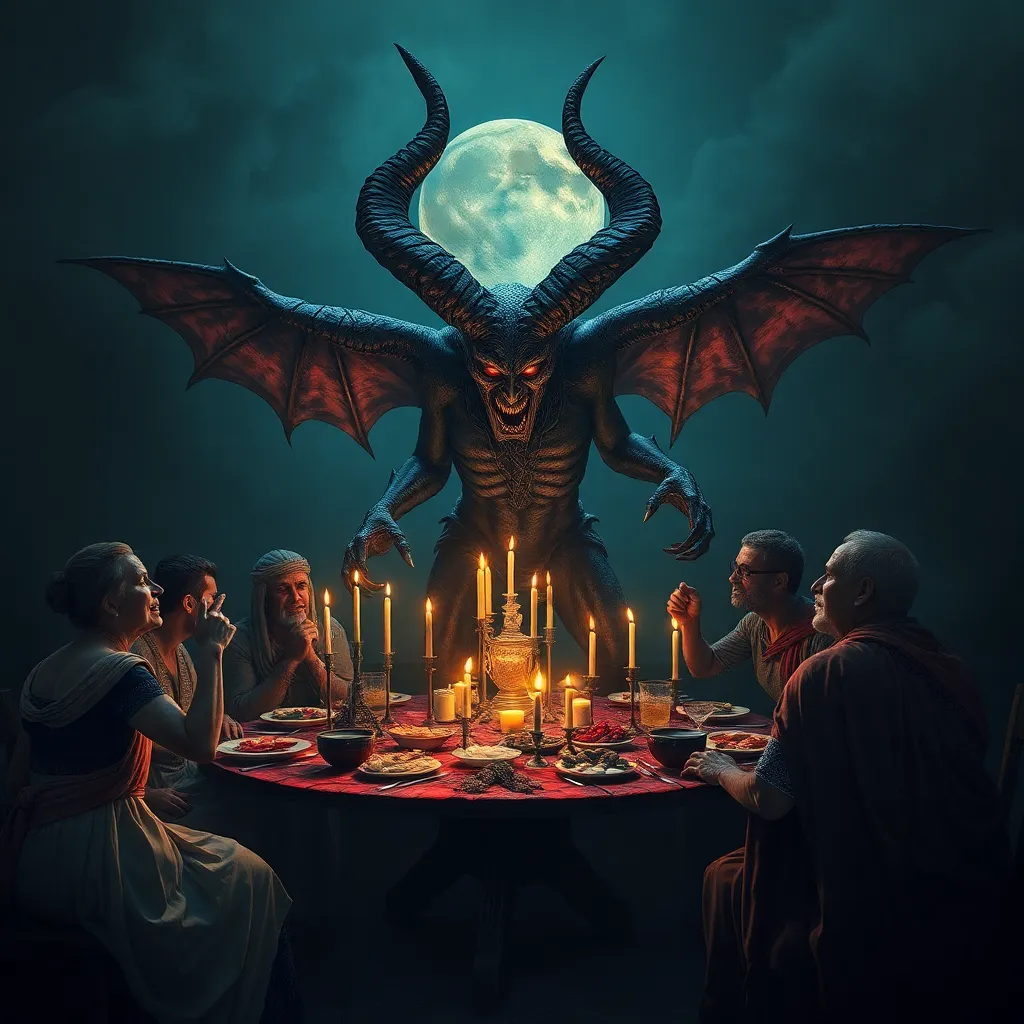The Alp: Exploring the Swiss Night Hag and its Link to Vampire Folklore
I. Introduction
The Alp is a fascinating figure in Swiss folklore, often depicted as a malevolent spirit or night hag that torments individuals during their sleep. It is traditionally believed to sit on the chest of the sleeper, causing feelings of suffocation and despair. This nocturnal entity has a profound connection to vampire mythology, as both share themes of fear, seduction, and the unknown. The purpose of this article is to delve into the historical context, cultural significance, and psychological interpretations of the Alp, while also examining its intriguing links to vampire lore.
II. Historical Context of the Alp
The origins of the Alp can be traced back to ancient Swiss culture, where it was often associated with the darkness of night and the fears that accompany it. In early accounts, the Alp was thought to be a spirit of the mountains, embodying both the beauty and terror of the Swiss landscape.
Over time, the characteristics of the Alp evolved. Initially depicted as a ghostly figure, it later took on more human-like traits, often described as a woman with long hair and a seductive demeanor. This evolution highlights the changing perceptions of femininity and sexuality within Swiss society.
Regional variations in the portrayal of the Alp also exist. In some areas, it is seen as a benevolent spirit that helps with agricultural tasks, while in others, it is strictly a malevolent force. This diversity reflects the rich tapestry of folklore that varies across the Swiss regions.
III. The Alp’s Role in Swiss Folklore
The Alp is often characterized by its eerie appearance and unsettling behavior. Traditionally, it is said to have a pale complexion, long hair, and piercing eyes that instill fear in those who encounter it. Its behavior is equally disturbing; the Alp is known to creep into the bedrooms of unsuspecting victims, causing nightmares and unrest.
Common stories and legends involving the Alp often depict it as a predator of the vulnerable. For instance, there are tales of young women being seduced by the Alp, only to find themselves trapped in a cycle of terror and despair. These narratives serve as cautionary tales about the dangers of succumbing to temptation.
As a symbol of fear and the unknown, the Alp encapsulates the anxieties of the human experience. Its existence in folklore provides a means for individuals to confront their fears, as well as a way to explain the inexplicable phenomena of sleep disturbances.
IV. The Alp and Nightmares: Psychological Interpretations
The influence of the Alp on sleep disturbances has long been a subject of interest for psychologists. Many believe that the Alp’s portrayal is rooted in the experiences of sleep paralysis, a phenomenon where individuals wake up unable to move, often accompanied by hallucinations of a dark presence in the room.
Parallels between the Alp and modern experiences of sleep paralysis are striking. In both cases, individuals report feelings of dread, a sense of being watched, and an inability to move. This connection suggests a deep-seated fear of the unknown that transcends cultural boundaries.
Culturally, nightmares have significant implications in Swiss society. They are often viewed as omens or messages from the spiritual realm, emphasizing the importance of dreams in understanding one’s life and the world around them.
V. The Connection to Vampire Folklore
There are notable similarities between the Alp and traditional vampire traits. Both are associated with nocturnal activities, and both exhibit predatory behaviors towards their victims. The Alp, like vampires, is often described as having the ability to drain life force, leaving victims exhausted and fearful.
Historical accounts linking the Alp to vampiric behavior can be found in various Swiss texts. For example, some stories depict the Alp as a creature that not only induces nightmares but also feeds off the fear and energy of its victims, akin to the way vampires are said to drain blood.
The role of the Alp in shaping vampire myths in Europe cannot be overlooked. As stories of vampires spread across the continent, elements of the Alp’s folklore likely influenced the characteristics and behaviors attributed to these legendary creatures.
VI. Comparative Folklore: The Alp and Other Night Hags
The Alp is not unique in its role as a night hag; similar figures exist in global folklore. For instance:
- Incubus: A male demon that lies on sleeping women, often associated with sexual seduction and draining vitality.
- Succubus: The female counterpart to the incubus, preying on sleeping men.
- Mara: A Scandinavian figure that sits on the chest of sleepers, inducing terrifying dreams.
This cross-cultural analysis illustrates the universal themes of fear and seduction found in night hag stories. These figures often embody societal anxieties about sexuality, vulnerability, and the dangers that lurk in the night.
VII. Modern Interpretations and Cultural Impact
In contemporary media, the Alp has been represented in various forms, from literature to film and art. Its portrayal often emphasizes themes of horror and the psychological aspects of fear. For example, in literature, the Alp has inspired works that explore the boundaries between reality and dreams, often blurring the lines in unsettling ways.
The influence of the Alp on modern culture can also be seen in horror films that depict nightmarish creatures preying on unsuspecting victims. These representations tap into the primal fears associated with sleep and the unknown.
Furthermore, there has been a resurgence of interest in folklore, with many people looking to rediscover traditional stories and their meanings. This modern fascination highlights the relevance of the Alp and similar figures in understanding contemporary issues related to fear, identity, and the human experience.
VIII. Conclusion
In summary, the Alp holds a significant place in Swiss folklore, intricately linked to vampire myths and the broader themes of fear and the unknown. Its portrayal as a night hag reflects deep-seated anxieties that resonate through time, illustrating the enduring power of these narratives in modern culture.
As we reflect on the impact of the Alp and its connection to vampire lore, it becomes clear that these stories continue to shape our understanding of fear and the human experience. Future research and exploration of folklore traditions may reveal even more connections and insights into the rich tapestry of human mythology.



